Graham Reid | | 9 min read

The world of music is populated by creative people -- and those around them who offer musicians absurd amounts of money, pampering for their inflating egos and medication for their every ailment, real or imagined. The surprising thing is that more musicians don’t follow Elvis, Britney Spears, Amy Winehouse and Pete Doherty into that netherworld of self-delusion, eccentricity and madness, but here are a few who have.
Joe Meek
Trigger-happy Phil Spector has not been the only bizarre producer in pop music. In the early 60s Britain’s Joe Meek crafted such memorable singles as Telstar by the Tornados and Have I The Right? by the Honeycombs, and he pioneered the use of electronic sounds. He also had an unhealthy obsession with Buddy Holly and the occult, and would try to record the voices of the dead in graveyards at night. He developed a drug habit and became paranoid and depressed. By the late 60s he was a mess and the hits stopped, and on the eighth anniversary of Holly’s death in February 67 he got into an argument with his landlady, shot her dead then killed himself.
Syd Barrett
The co-founder of Pink Floyd is the poster boy for the phrase “acid casualty”. In the late 60s he sampled LSD and this, combined with a fragile mental condition, tipped his behaviour from the eccentric to the weird and then the tragic. He became unpredictable, would sometimes stand on stage and not play, wrote songs that increasingly mirrored his decaying mental state and finally in January 1968 the band simply decided not to pick him up for a concert. Two months later it was announced Barrett was no longer a member of Pink Floyd -- who went on to record Dark Side of the Moon and become millionaires. Barrett recorded sporadically, became increasingly dishevelled and once appeared at a Pink Floyd session where the band initially didn’t recognise him. From the mid 70s he lived as a virtual recluse in his mother’s house and died in July 2006 age 60. He was mourned by the rock world because although his body of work with Pink Floyd was small it influenced musicians such as David Bowie.
Skip Spence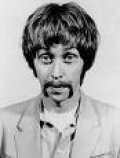
Musically gifted, Spence -- the American counterpart to Syd Barrett -- was the guitarist in the seminal psychedelic band Quicksilver Messenger Service before shifting to drums and joining the early version of Jefferson Airplane. He quit them to form the ill-fated Moby Grape in ‘67 which suffered from deceitful management and crass over-promotion which alienated its hippie following. Spence regularly took LSD which, as with Barrett, played on his already insecure emotional state. He became paranoid and menaced band members, withdrew emotionally and in mid 68 -- just a year after Moby Grape’s thrilling debut album -- he was committed to Bellevue Hospital in New York where he was diagnosed as schizophrenic. On release he recorded a cult-classic solo album Oar but thereafter only had brief encounters with the music world and became a homeless drifter. He died in 1999 age 52.
Brian Wilson
The Beach Boy who didn’t surf but whose sublime music was often saturated in California sunlight -- or cut by hard-edged shadows -- became one of the most famous casualties of rock in the late 60s. Some said Brian Wilson lost his nerve when confronted by the genius of the Beatles’ baroque work and others blamed drugs although there was evidence of complex psychiatric conditions. But whatever caused his breakdown, at the end of the 60s he was obese and stayed in his bedroom for three years until psychiatric intervention. That wasn’t entirely successful and by the early 80s his weight ballooned again and he was addicted to cocaine. His recovery since has been slow but he is now touring, writing and performing, although mostly relying on his classic songs or recycled old material. He still relies on Svengali figures to get him through the day.
Jaco Pastorius
Pastorius was the greatest jazz bass player of his generation and in 1976 he joined Weather Report alongside the legendary musicians Wayne Shorter and Joe Zawinul. With his rock star looks, he lived the life of limousines and groupies, and played on Joni Mitchell albums. But he fell as fast as he flew and was dead at age 35, a homeless, alcoholic and manic depressive who was beaten to a pulp by a Florida nightclub manager who didn’t recognise the drunk pounding on his club door at 4am. After a stint in Bellevue Hospital 18 months previous, Pastorius told friends his medication would impede his playing so he would stop and self-medicate with drink and drugs. The man who once slept between silk sheets ended up on park benches, and was finally left for dead in the street just a few kilometres from where he had been brought up. It was a brief but tragic circle.
Lisa “Left Eye” Lopes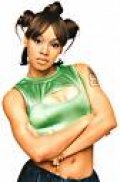
Founder of the phenomenally successful pop-cum-hiphop group TLC -- for whom she wrote the hit Waterfalls among others -- Lisa Lopes was known as Left Eye for wearing a condom over her left eye (something to do with promoting safe sex) and distinctive markings she would put on that side of her face. She was also the most physically volatile and emotionally tempestuous member of the trio and when fame gave her the opportunity she challenged the others to prove who was best in simultaneously released solo albums. (Winner takes US$1.5 million, she said). She was tough, tattooed and attributed her pugnaciousness to having come from an abusive home. She admitted to being an alcoholic and entered a relationship with football player Andre Rison who also abused her. Yet even after she burned his house down in ’94 (after alleging his infidelity), the two remained together. Her solo career looked promising and she was a sharp spotter of talent, but as her producer Jermaine Dupri said, “you could expect the unexpected [with her]”. Most unexpected was the car crash that killed her in 2002 at 30, just as she was finding a sense of emotional peace according to friends.
Daniel Johnston
In 1990 after a successful performance at the South by Southwest Festival in Austin this singer-songwriter was being flown home by his father in a small plane when he grabbed the stick and sent the aircraft into a tailspin. His father wrestled back control and they landed in some trees. Daniel was committed to a mental hospital -- not for the first time. Johnston, a Beatle obsessive, had been an obsessive adolescent who devoted his life to drawing, making home movies, and writing music which he recorded on dozens and dozens of cassettes. His aching tone and songs of loss may have been determined by his crush on Laurie coming to an abrupt end when she married. Johnston became a cult figure in rock when Kurt Cobain of Nirvana wore a t-shirt with a Johnston drawing on it, and his songs have been covered by Tom Waits, Sonic Youth, Pearl Jam and many others. His mental illness, depression, Laurie-fixation and religious obsession was documented The Devil and Daniel Johnson (2006). It makes sometimes funny but mostly harrowing and sad viewing.
Nina Simone
As with many artists, Simone placed a premium on her talents although was quite clearly a musical genius. Classically trained, she also encompassed jazz, gospel, soul and pop. But bi-polar disorder for which she intermittently took medication also meant she might do this within the space of one album, and sometimes one song when she performed live. A civil rights activist who sometimes argued for violent revolution and separatism, she railed against black stereotypes, championed the causes of black women, and combined that with a haughty demeanour which many saw as arrogant. She was tough, aloof and her private life was volatile: she was pursued for unpaid taxes, embarked on a lengthy affair with the prime minister of Barbados where she lived in self-imposed exile, and there were incidents involving guns, one in 95 when she wounded a neighbour‘s son who she said had disturbed her concentration. The gifted, often angry and largely unapologetic High Priestess of Soul died in France in 2003 age 70.
Jeanine Deckers: The Singing Nun 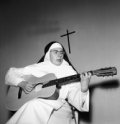
Having Debbie Reynolds play you in a movie when you are still only 33 would probably be enough to tip anyone over the edge, but by 1966 when that film appeared the career of The Singing Nun (as Belgian nun Deckers was known) was pretty much over anyway. Her song Dominique had dominated the charts in 1963 but she proved to be a one-hit wonder and when she left the monastery in ’67 she began the slow dive into obscurity. She wasn’t without her moments however and in ‘66 had controversially supported John Lennon when he said the Beatles were more popular than Jesus, sang Glory Be to God for the Golden Pill (in praise of the contraceptive pill) and after leaving the convent came out as a lesbian and supporter of gay rights. But when the Belgian government started to hound her for back taxes in the late 70s -- she had given much of her earnings from Dominique to the convent and other causes and didn’t believe she had to pay taxes on donations -- her life unravelled. She unsuccessfully tried to revive her music career (Dominique in disco style!) but in 1985, bedevilled by debt, she and her longtime partner Annie Pecher -- with whom she had opened a school for autistic children -- committed suicide together.
Diana Ross
In her deliciously superficial 1993 autobiography Secrets of a Sparrow the heartfelt message from this former singer with the Supremes was that happiness lay in love, children and the simple life. But the dozens of pictures of her in expensive photoshoots decked out in designer clothes (or nearly naked) were testament to just how removed from reality this ruthlessly ambitious singer could be. Although she established a creditable career as an actress and delivered some superb solo albums (notably diana in 1980) she most often alienated critics and fans for her diva behaviour, extravagant lifestyle and deviousness in cutting other former Supremes out of the picture. She had bouts with the law -- a high-profile drink-drive arrest in 2002 -- but it is her book which shines the sharpest spotlight on her capacity for self-delusion, greeting card cliches passing as poetry, and designer dresses which reveal more than they cover.
Vivian Stanshall
In the late 60s the bizarrely dressed Bonzo Dog Doo-Dah Band enjoyed a brief flirtation with mainstream success when their song I’m the Urban Spaceman (produced by Paul McCartney) made the charts. Their trumpeter/singer Vivian Stanshall was a rare combination of English eccentric and Dada performer who, after the band split up, went on to become a renown painter, wit, bon vivant and author. His album/book/movie Sir Henry at Rawlinson’s End parodied the aristocracy in the manner of Evelyn Waugh-meets-Monty Python.
An alcoholic who became addicted to the Valium he took for panic attacks, Stanshall was a wicked satirist who sometimes teamed up with the equally outrageous Keith Moon of the Who to stage elaborate pranks for their own amusement. His is the voice in Mike Oldfield’s Tubular Bells announcing each new instrument.
The handsomely bearded, often oddly attired Stanshall -- who saw nothing unusual in his erratic and amusing behaviour -- died when fire swept through his Muswell Hill flat in early 1995, 100 years to the day after the death of the 19th century adventurer and parliamentarian Sir Henry Rawlinson whose name he borrowed for his greatest work.
Frank Rosolino
Trombonist Rosolino was one of the best-loved men in jazz “with a wit that literally would not quit” according to his friend Gene Lees. He worked with Stan Kenton, Dexter Gordon, Mel Torme and many others, and by the 70s was in the popular funk-rock outfit Tower of Power. He was always cheerful, but one night in November 1978 he told his partner he just wanted to stay at home with his two young sons while she went to a nightclub. On her return she found Frank had killed himself after aiming the gun at the heads of the two boys, one of whom survived although was blinded. Rosolino’s autopsy revealed no significant amounts of drugs or alcohol, and his career was stable after some lean years.
The man Lees called “the joker” left everyone guessing.

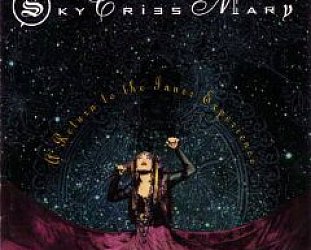

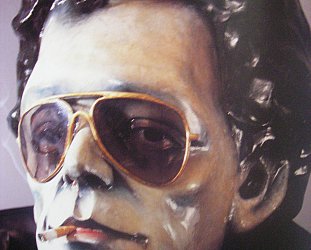
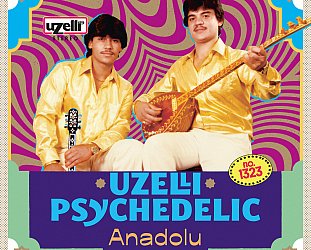


Mickey Carroll - Jul 21, 2009
SaveThis is just some input from a seasoned song writer musician .
I think song writing should be paying attention to world community in regard to
it's struggle and life experience . Example ( Song For My Son ) is a song about children weapons or a son away at war . It is culturally diverse because of it's performance .This song has over 45.000 views and growing on You Tube . I invite you to view it and hope you enjoy
http://www.youtube.com/watch?v=Gey8AAlMHDs
All the best with your ongoing creative at Elsewhere
God Bless
Mickey
Mickey Carroll
www.motherj.com
Grammy nominee
Gold Record recipient
post a comment